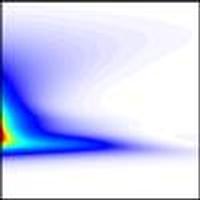Our official English website, www.x-mol.net, welcomes your
feedback! (Note: you will need to create a separate account there.)
Dominance of backward stimulated Raman scattering in gas-filled hollow-core photonic crystal fibers
Optica ( IF 8.4 ) Pub Date : 2018-05-08 , DOI: 10.1364/optica.5.000570 Manoj K. Mridha , David Novoa , Philip St.J. Russell
Optica ( IF 8.4 ) Pub Date : 2018-05-08 , DOI: 10.1364/optica.5.000570 Manoj K. Mridha , David Novoa , Philip St.J. Russell

|
Backward stimulated Raman scattering in gases provides a promising route to the compression and amplification of a Stokes seed pulse by counter-propagating against a pump pulse, as has been demonstrated already in various platforms, mainly in free space. However, the dynamics governing this process when seeded by noise has not yet been investigated in a fully controllable collinear environment. Here we report, to the best of our knowledge, the first unambiguous observation of efficient noise-seeded backward stimulated Raman scattering in a hydrogen-filled hollow-core photonic crystal fiber. At high gas pressures, when the backward Raman gain is comparable to, but lower than, the forward gain, we report quantum conversion efficiencies exceeding 40% to the backward Stokes at 683 nm from a narrowband 532 nm pump. Efficiency increases to 65% when the backward process is seeded by a small amount of back-reflected forward-generated Stokes light. At high pump powers, the backward Stokes signal, emitted in a clean fundamental mode and spectrally pure, is unexpectedly always stronger than its forward-propagating counterpart. We attribute this striking observation to the unique temporal dynamics of the interacting fields, which cause the Raman coherence (which takes the form of a moving fine-period Bragg grating) to grow in strength toward the input end of the fiber. A good understanding of this process, together with the rapid development of novel anti-resonant-guiding hollow-core fibers, may lead to improved designs of efficient gas-based Raman lasers and amplifiers operating at wavelengths from the ultraviolet to the mid-infrared.
中文翻译:

充气空心光子晶体光纤中后向激发拉曼散射的优势
气体中向后激发的拉曼散射通过与泵浦脉冲反向传播,为斯托克斯种子脉冲的压缩和放大提供了一条有希望的途径,正如已经在各种平台(主要是在自由空间)中所证明的那样。但是,尚未在完全可控的共线环境中研究控制此过程的动力学(当受到噪声影响时)。在此,我们尽我们所知,首次对在充氢的空心光子晶体光纤中有效播种后向激发的拉曼散射进行了明确的观察。在高气压下,当后向拉曼增益与前向增益相当但低于前向增益时,我们报告从窄带532 nm泵到683 nm后向斯托克斯的量子转换效率超过40%。当通过少量的后向反射的正向产生的斯托克斯光播种反向过程时,效率将提高到65%。在高泵浦功率下,以干净的基本模式发射且频谱纯净的后向斯托克斯信号总是比其前向传播信号强。我们将这一惊人的观察归因于相互作用场的独特时间动态,这会引起拉曼相干(以移动的细周期布拉格光栅的形式出现)的强度朝着光纤的输入端增长。对这一过程的深入了解以及新型反共振导引空心光纤的迅速发展,可能会导致改进的高效气体基拉曼激光器和放大器的设计得以实现,该激光器在从紫外到中红外的波长下工作。
更新日期:2018-05-18
中文翻译:

充气空心光子晶体光纤中后向激发拉曼散射的优势
气体中向后激发的拉曼散射通过与泵浦脉冲反向传播,为斯托克斯种子脉冲的压缩和放大提供了一条有希望的途径,正如已经在各种平台(主要是在自由空间)中所证明的那样。但是,尚未在完全可控的共线环境中研究控制此过程的动力学(当受到噪声影响时)。在此,我们尽我们所知,首次对在充氢的空心光子晶体光纤中有效播种后向激发的拉曼散射进行了明确的观察。在高气压下,当后向拉曼增益与前向增益相当但低于前向增益时,我们报告从窄带532 nm泵到683 nm后向斯托克斯的量子转换效率超过40%。当通过少量的后向反射的正向产生的斯托克斯光播种反向过程时,效率将提高到65%。在高泵浦功率下,以干净的基本模式发射且频谱纯净的后向斯托克斯信号总是比其前向传播信号强。我们将这一惊人的观察归因于相互作用场的独特时间动态,这会引起拉曼相干(以移动的细周期布拉格光栅的形式出现)的强度朝着光纤的输入端增长。对这一过程的深入了解以及新型反共振导引空心光纤的迅速发展,可能会导致改进的高效气体基拉曼激光器和放大器的设计得以实现,该激光器在从紫外到中红外的波长下工作。











































 京公网安备 11010802027423号
京公网安备 11010802027423号